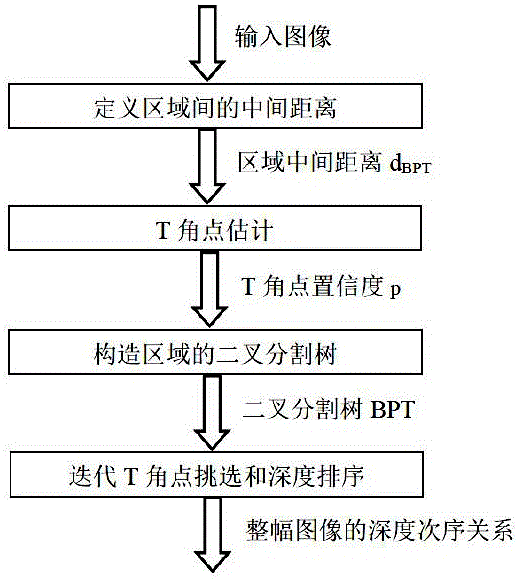Binary-tree based object depth order evaluation method in monocular image
A depth order, in-image technology, applied in the field of image processing, which can solve problems such as T corner estimation errors
- Summary
- Abstract
- Description
- Claims
- Application Information
AI Technical Summary
Problems solved by technology
Method used
Image
Examples
Embodiment Construction
[0044] The preferred embodiments of the present invention will be described below in conjunction with the accompanying drawings. It should be understood that the preferred embodiments described here are only used to illustrate and explain the present invention, and are not intended to limit the present invention.
[0045] Such as figure 1 As shown, the method for estimating the depth order of objects in a monocular image based on a binary tree includes:
[0046] Step 1, define the middle distance between the image regions;
[0047] Step 2, estimating the T corner point confidence degree for the T corner point formed at the junction of the image regions;
[0048] Step 3, according to the above-mentioned intermediate distance and the T corner point confidence degree constructing the binary segmentation tree of the region so as to obtain the regional model of the image;
[0049] Step 4. Select the optimal set of T corner points, complete the depth sorting, and obtain the depth ...
PUM
 Login to View More
Login to View More Abstract
Description
Claims
Application Information
 Login to View More
Login to View More - R&D
- Intellectual Property
- Life Sciences
- Materials
- Tech Scout
- Unparalleled Data Quality
- Higher Quality Content
- 60% Fewer Hallucinations
Browse by: Latest US Patents, China's latest patents, Technical Efficacy Thesaurus, Application Domain, Technology Topic, Popular Technical Reports.
© 2025 PatSnap. All rights reserved.Legal|Privacy policy|Modern Slavery Act Transparency Statement|Sitemap|About US| Contact US: help@patsnap.com



